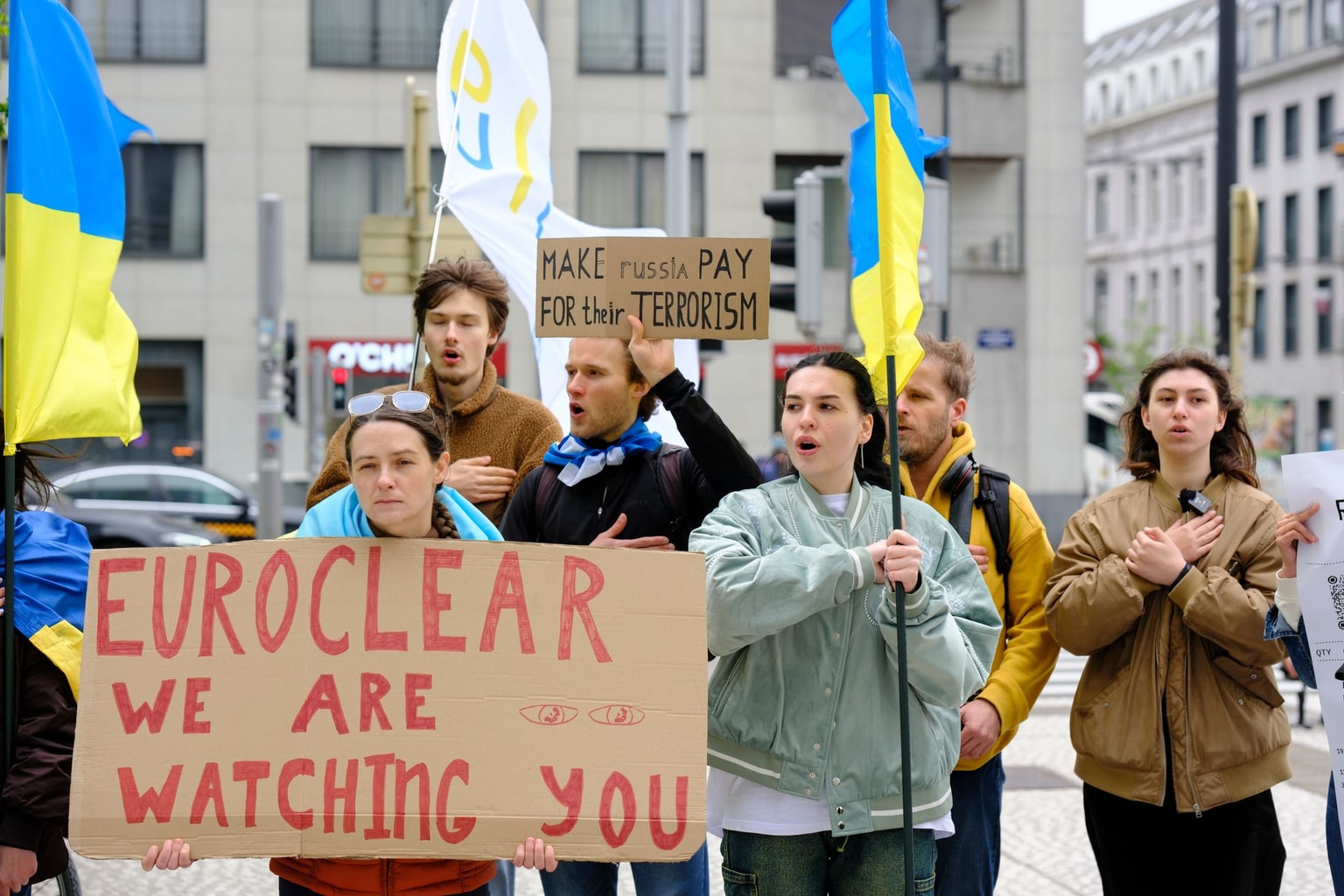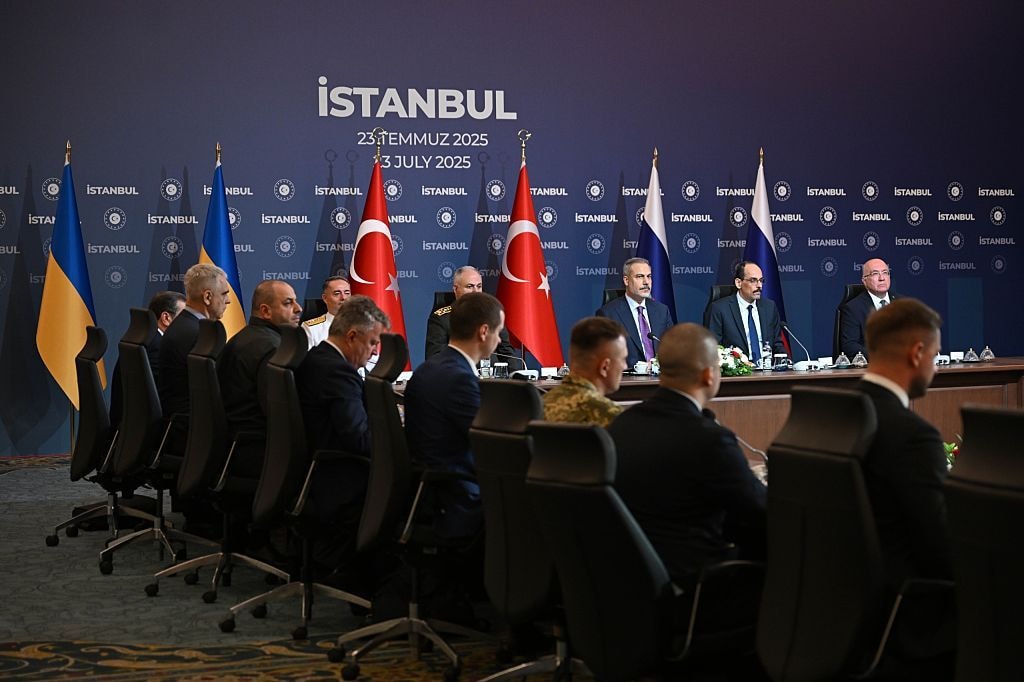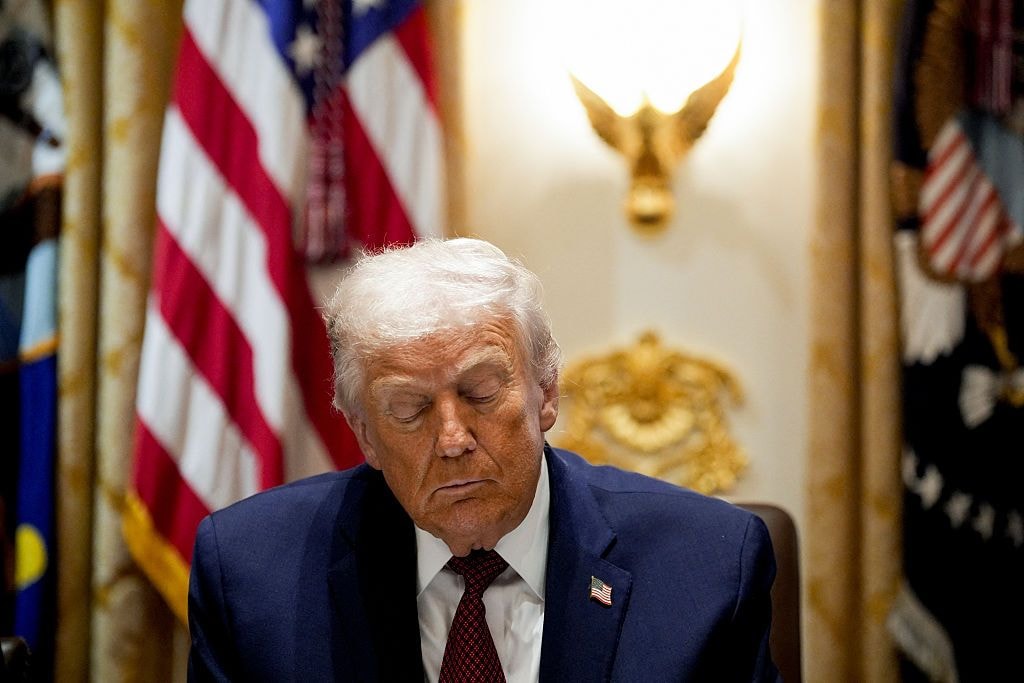IZIUM, Kharkiv Oblast – Six months into the occupation of Izium in Kharkiv Oblast, Russian forces announced a mysterious strict 24-hour curfew on Sept. 8.
Roman, a bread vendor at the local market who declined to give his last name, drove north the following morning on an errand in defiance of the curfew, only to find the city streets completely empty.
"I headed out and there was a new checkpoint, one I'd never seen before," he told the Kyiv Independent. "When they asked for my papers in Ukrainian, and I saw this blue tape on their uniforms, I was overwhelmed. 'Are you our guys?' I asked, to which they answered: 'We are closer than you think’."
Two days later, the world learned about the stunning liberation of Izium.
With a prewar population of 46,000, it was the largest settlement liberated in the rapid Ukrainian counteroffensive that blasted through Russian lines of defense, routing occupying forces from almost all of Kharkiv Oblast.
The Kyiv Independent visited Izium and other neighboring settlements shortly after the area was liberated. The story of the locals' experience under Russian occupation is overwhelmingly one of a population holed up inside their homes, living in fear but never in doubt that their ordeal would be temporary.
Slowly, then all at once
On the broad highway from the regional capital Kharkiv into Izium, traces of battle can be seen everywhere. The road itself remains cluttered with destroyed Russian military equipment, while unexploded shells and small arms cartridges litter the ditches on the roadside. Tank crews work around the clock to salvage other tanks, both Russian and Ukrainian, that are able to be repaired and returned to service.
Speaking anonymously, a Ukrainian officer stationed at a field hospital in the area confirmed that Ukrainian forces suffered heavy casualties in the first days of the counteroffensive, centered around the city of Balakliia. "In our sector alone we had around 200 wounded per day," he said. "And the dead? It's not our job to count them."
Once the initial line was broken however, the Russian retreat from the area was quick and chaotic. In Izium specifically, Russian forces were in grave danger of being surrounded, and left dozens of armored vehicles and ammunition dumps in their wake, valuable trophies for the Ukrainian military in the war ahead.
Over the next 24 hours, Izium locals, of which there now remain around 10,000 in the city, learned of their liberation.
The families of Tetiana Lukianenko and Veronika Kuchera were met by the Kyiv Independent while strolling the streets of their city, without fear for the first time since Feb. 23. “We came to say hello to our city,” Lukianenko said, “after liberation, after all it’s been through.”
“We hadn’t seen the Russians for half a day by the time we heard equipment rolling through the streets again,” said Kuchera, recalling the last day of her city’s occupation. “People started saying that Ukraine had arrived, so we all came outside to find three of our armored vehicles with our guys on them.”
Many analysts initially expected a new front line to hold over winter along the Oskil River, the opposite bank of which remains occupied, about twelve kilometers from Izium.
Military activity remains high in the region, with long columns of equipment moving in both directions. Unconfirmed reports claim that Ukraine has successfully forded the Oskil in several locations, while a UK defense intelligence report suggests that Russia will dig in to new lines of defense further east of the river.
Asked if the counteroffensive was over, a Ukrainian officer replied concisely. "No," he said. "Far from it."
Testimonies of violence
Russia's initial occupation of Izium was far less swift and far more painful than its exit. Over most of March, the city faced a brutal assault from Russian forces sweeping down from Kupiansk. With the city located on a strategic crossing of the Siverskyi Donets River, Ukrainian forces defended Izium doggedly, only making a final withdrawal on April 1.
As with other Ukrainian cities occupied only after fierce fighting, the bombardment of civilian residential areas in Izium came with a tragic human toll. In a quiet pine forest just north of the city limits, an existing city cemetery has swelled with the mass graves of hundreds of civilians. As in Mariupol, now an occupied city in Donetsk Oblast, many were forced initially to bury their loved ones in front of apartment buildings as the intense shelling made it unsafe to leave the basement.
In May, Russian forces began digging up the graves, transferring the bodies to the forest outside Izium, as has been documented in Mariupol.
Vitaliy Shahun, a paramedic in the main city hospital, was an early witness to the victims' new resting place, an existing cemetery in the forest just outside the city limits.
"I was on my way to visit (the grave of) my mother when I saw them," he said. "Hundreds of wooden crosses, some with names and dates, but most without."
Only four months later, in the company of deminers, war crimes investigators, and international press, would the remains of about 450 civilians be exhumed a second time, beginning a long process of identifying the victims and documenting the circumstances in which they were killed. Some bodies have already been found with tied hands or signs of torture.
Most smaller settlements in the area were occupied by Russian troops without much resistance, but they were not without their share of violent tragedy.
In Volokhiv Yar, a village 50 kilometers north of Izium, a school bus carrying evacuating children from Donetsk Oblast was shot up by Russian troops on Feb. 27, according to local resident Daria Panchenko. The driver believed that the area was not yet occupied, Panchenko said.
"They were all students, nine of them were killed," she said. "They didn't let us salvage the bodies for two weeks."
When Russian troops entered the area, they were tasked with filtering out those suspected of affiliation with the Ukrainian Armed Forces. According to locals, relatives of soldiers were specially targeted, and often held in basements for any amount of time.
Despite not having any connection to the military, Shahun spent a night in detention with five others in inhuman conditions.
“It was awfully cold there, with a wood stove but without wood,” Shahun said. “No fuel, no food, and nowhere to relieve oneself. And they never explained what they wanted from me.”
A temporary terror
For Ukrainians living both in Izium and in more rural areas, life for six months under Russian occupation was lived almost entirely within the confines of their home.
Liubov Balabolina, an elderly woman living on the outskirts of Izium, lived off her own produce for months, with the iron fence of her traditional house protecting her private space from the outside world.
“It was preferable to going outside,” she said.
Two weeks after Volokhiv Yar was occupied, Russian regular troops were replaced by proxy units of forcibly mobilized Ukrainian men from the occupied parts of Donbas, a region in the east of Ukraine comprising Donetsk and Luhansk oblasts. These poorly-trained troops, assigned to maintain order in the village, were found by locals to be far more disorderly, and far more dangerous.
The random spraying of bullets at locals' houses and cars was a common occurrence, while as with all over occupied Ukraine, looting of private property was common.
“They just terrorized us more than anything,” Panchenko said. “When a school principal refused to cooperate with them, they lined him up against a wall and sprayed rounds all around him.” The principal was able to escape the village, and the school building was destroyed by fire after a Ukrainian strike on Russian munitions stored there.
Due to the Russian blackout of phone and internet signal many had no knowledge of the progress of the war in the rest of Ukraine. In Izium, news was limited to two radio channels and the Kharkov Z newspaper, issued by the occupiers.
“In Kharkov Z they talked non-stop about how everything was great and being rebuilt,” Shahun said. “We didn’t take it seriously for long.”
With the nearby front line more volatile than in Ukraine’s south, little effort was otherwise made to prepare the area for annexation.
“They said it from the start of course, this is Russia, we’re here forever,” said Panchenko’s husband Vitaliy, who was involved in partisan activity throughout the war. Vitaliy said he participated in setting a Russian armored vehicle on fire and passed useful coordinates to Ukrainian artillery.

As the city lay in ruins, few locals took kindly to the arrival of Russia “forever.” “For a long time,” Kuchera said, “when the Russians started hanging their flags up everywhere, locals would constantly tear them down by night.”
Families were offered 10,000 rubles ($165) if they sent their child to schools to study under the Russian curriculum. The schools never opened, as they were either destroyed or host to Russian soldiers.
“Of course we weren’t going to send them to school anyway,” Lukianenko said of her daughters. “We were never in doubt that Ukraine would return home to us."
Healing wounds
While the other crossings were destroyed, Izium's grand white pedestrian bridge, though damaged, remains intact. As they cross, residents use the high point of the bridge to check for phone signal, which there hasn't been since the city's liberation. One man, managing to catch a hint of a signal, updated a friend over the phone with a tone of simple exhaustion.
The coming weeks post-liberation will be challenging for Izium and the surrounding areas. Entire villages, let alone the fields around them, are in urgent need of demining, while gas and electricity supply over the winter remains a distant dream. In the square by the city’s main cathedral, hundreds gather regularly for ad hoc distributions of humanitarian aid.
According to the unnamed Ukrainian officer, on Sept. 14, twelve Russian soldiers hiding in civilian clothing had been caught in the nearby city of Balakliia, having kept hold of their rifles. Meanwhile, the Security Service of Ukraine continues to arrest collaborators with the Russian regime on a daily basis.
Questions of loyalty also loom large in the conscience of everyday locals.
Roman watched the queues for humanitarian aid with dismay. “I haven’t forgotten their faces,” he said, meaning the people who used to come out with Russian military symbols during the occupation, and who are now chanting, “Glory to Ukraine.”
“We know who they are, and justice will come.”
For many, with the darkness of life under occupation still fresh, and the front lines still within earshot, the joy of liberation is all relative.
“I feel more calm now, more safe.” Balabolina said on the bench outside her house. “Any more than that I can’t say.”
Note from the author:
Hi, I'm Francis Farrell, and I travelled to the territories liberated by Ukraine’s recent counteroffensive for this report. As the mass graves of hundreds are dug up outside Izium, it is our duty to continue to record and share the testimonies of Russia’s six-month occupation. Please consider continuing to support our reporting.









































